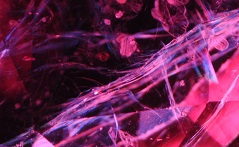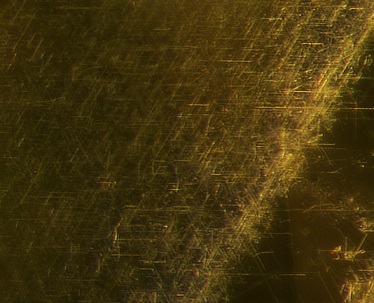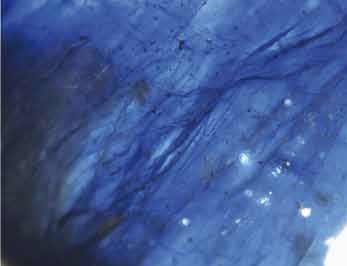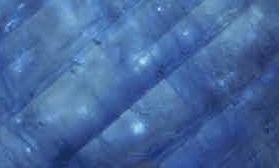Sapphire is a beauty of nature that we all love to wear. However a real sapphire is increasingly becoming harder to find in recent times. A typical gemstone pass hands through at least 5-6 intermediaries before it reaches the end consumer. High value and rarity of the sapphire makes it a prime target for deception. Even sometimes the dealers and jewelry makers, them themselves fall for fake sapphires and the line ends with a poor consumer who may have paid a fortune to wear a complete lie. Therefore it’s important for gem and jewelry enthusiasts to know at least the basics to spot a fake.
Real Sapphire Vs. Fake
The first step is to understand how you define a real sapphire from a fake. Because in the world of gemstones, there could be ample ways a buyer can be fooled. But the level of deception depends on what you perceive as a real sapphire. Following table shows different levels between real vs. fake.
| Real | Natural unheated sapphire |
| Real, but treated | Natural heat treated sapphire |
| Created | Synthetic or lab created sapphire |
| Fake | Composite sapphire |
| Impersonation | Other gemstones presented as sapphire |
If someone sells you a spinel or a zircon pretending to be a sapphire, then it will be a complete lie. Cause these two gemstones may sometimes look like sapphire to untrained eye, but their chemical composition is completely different from a corundum.

However above the impersonation, you will still get a corundum at least partially. A pure natural sapphire has only gone through a cutting process while converting it from a rough to the marvel. This is the most genuine, rare and valuable portion of gemstones. In modern day gem trade unfortunately you may have to go as close as you can get to the origin to buy a real natural unheated sapphire.
A lot of the sapphires in the market now are heat treated natural sapphires. This is an acceptable level of treatment acknowledged in gem industry. The stone is still a natural, but heat treated to enhance the color. The heat treatment process will dissolve the impurities into the corundum and gives it a more even and enhanced color. You may find rubies and blue sapphires that were actually star sapphires when they were found.
Is Lab Created Sapphire Fake?
Then there are synthetic sapphires. These are lab created sapphires formed through a crystal growing process. The key difference between a lab created sapphire and a natural one is the way it is formed. A process that have otherwise taken millions of years to naturally occur is speed up in a lab to mere days and weeks.
The chemical composition of a synthetic sapphire is almost identical to that of a naturally found sapphire. Synthetic sapphires are priced lesser than a natural sapphire and you can find many jewelers and sellers who sell synthetic sapphires. You will still be wearing a corundum that has same properties as a natural sapphire which will withstand the tear and wear to the same level.
Composite Sapphires
The fake sapphire market however exists when it comes to composite sapphires. This currently is the most troublesome and elusive problem of the modern day gem trade. There are professionally made composite sapphires that gets mixed into the international gem market from different sources. This has caused a significant damage to the gem industry as a whole.

Composite sapphire is a very low quality corundum that otherwise cannot be sold for jewelry making. These are available in bulk form at a very low rate to purchase. These low grade corundum that are filled with impurities, fractures and large seams are filled with lead glass to look like sapphires. These are further heat treated and diffused to give a comprehensive sapphire look. Composite sapphire when subjected to everyday wear and tear, gets distorted quickly. Even when met with enough impact force from certain directions, these composite sapphire are likely to break down completely.
Some of these composite sapphires are now made with greater precision, only a careful examination by a skillful gemologist can identify and separate them. An untrained naked eye is not likely to spot many of the telltale signs of composite sapphire, but following are some of the basic ways you can tell if it’s a real sapphire or a fake.
1. Look for Visible Flaws to Find A Real Sapphire
This is a little tricky observation as even the natural sapphires are inherent with flaws. But the flaws of a natural sapphire and a composite sapphire can be different. A lot of cavities, visible seams, fractures, different visible planes and slight damages along the gem facets are signs of a composite sapphire. Whereas natural sapphire may have impurities caused by inclusions. These inclusions can be seen as silk to the naked eye which when magnified look like tiny needles.
2. Abnormal Color Concentrations
Composite sapphires are made by filling the flaws with lead glass. Those lead glass filled flaws and portions of the gemstone may exhibit uneven color concentrations. There could be small and tiny fissures, seams and parting planes that have high concentration of color. These can be more visible in rubies and blue composite sapphires with some level of magnification.
A natural sapphire however will not have such abnormal color concentrations. This is also one way of identifying natural sapphire from synthetic sapphire. Synthetic sapphire coloring infusion process can also make uneven color concentrations. Either way you can spot a real sapphire from a fake.
3. Look for Visible Damages
Sapphire is the mineral corundum and scores 9 on Mohs hardness scale only behind diamond which is a 10. Real sapphires are extremely scratch resistance. If you rub it hard against a coin or a key, you will see no damages. Whereas a composite sapphire will have lead glass filling on it’s surface that gets easily scratched by metal. Lead glass composites are also prone to damages along the weak facets of the gemstone. Therefore jagged and damaged facet meeting lines are indications of a fake sapphire.
4. Reflecting the Spectrum of Light
Different colors of the sapphire exists due to it’s chemical imperfections. A 100% pure corundum will be colorless, a further extension to white sapphire. Different foreign elements included into the sapphire during it’s natural formation process will absorb different wave lengths of different colors, thereby refracting only the wave length of the color that was not absorbed. This is the visible color of a gemstone.

However the presence of glass in the composite sapphire refract and disperse the light into different colors of the spectrum. However the new and evolved glass filling techniques can replicate similar spectrum absorption properties of natural corundum by making different elemental inclusions.
5. Flash Effect of Composite Rubies
One of the known characteristics of composite rubies made by lead glass filling is the slight blue color flash effect. This will be visible through a standard jewelers microscope. The different refractive levels of the low quality natural sapphire host and lead glass causes these blue to violet color flashes.

6. Dip Some Household Cleaning
When glass filled sapphire come into contact with household cleaners, acids or alcohol, the glass filling of the fractures gets damaged and etched. Then these fracture fillings become much more visible with some level of magnification. The complete appearance of the fake gemstone can be visibly tarnished by doing this whereas a natural sapphire will stand strong.
7. Air Bubbles and Reflective Black Spots
One of the most evident feature of glass filled sapphire is the abundant amount of bubbles in the interior of the gemstone. Sometimes these bubbles can be seen as slightly reflective tiny black spots. These will be readily visible with a certain level of magnification or even to the naked eye if inspected very closely under different lighting conditions.

8. Breath on to the Sapphire
Another accepted method is to do a fog test. Breath on to the surface of the sapphire until it gets fogged. If the fog clears out instantly, the sapphire can be real, whereas composite sapphire may take few seconds to clear. This is considered taking place due to high heat conductivity of the sapphire. However with the new lead and sometimes cobalt glass filled sapphires may not be accurately measured with this method.
9. Certification by a Recognized Institute
A fake sapphire can also be elusive to all above testing methods. If the value of the sapphire that you intend to purchase is quite significant, it will be prudent to have the stone inspected with a reputed institute like American Geological Laboratories or from Gemological Institution of America. An independent and experienced jeweler can also spot above mentioned properties through some standard tests.
Final Thoughts
A known origin for composite glass filled sapphire is Bangkok. Thailand has a history of gem trading dating back to many years making them the most prominent intermediary. Also some of these fake sapphires were detected in Hong Kong, United Kingdom and even in the gem markets in USA.
It’s always reliable to reach the origin, if you are particular about certain sapphire origins like Ceylon Sapphire. However it is always good to trust your instincts and make sure sapphire accompanies some sort of a certification. Finally, happy sapphire hunting.
6 thoughts on “How to Tell Real Sapphire vs Fake”
Leave a Reply
Recent Content
It is no secret that jewelry artisans worldwide love the exquisite sapphires mined in Sri Lanka. These colorful nature's treasures are well known as 'Ceylon sapphires' in the gemstone trade....
Well, there are many reasons why lab-created sapphire has grown in popularity in the recent past. As with many other industries, the gem and jewellery industry has also been adjusting itself to...






Thank you so much for including this insightful website.
Thanks for including really an elaborate article.